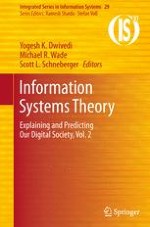
2012 | OriginalPaper | Buchkapitel
1. Employing Personal Construct Theory to Understand Information Systems: A Practical Guide for Researchers
verfasst von : M. Gordon Hunter, Peter Caputi, Felix B. Tan
Erschienen in: Information Systems Theory
Verlag: Springer New York
Aktivieren Sie unsere intelligente Suche, um passende Fachinhalte oder Patente zu finden.
Wählen Sie Textabschnitte aus um mit Künstlicher Intelligenz passenden Patente zu finden. powered by
Markieren Sie Textabschnitte, um KI-gestützt weitere passende Inhalte zu finden. powered by